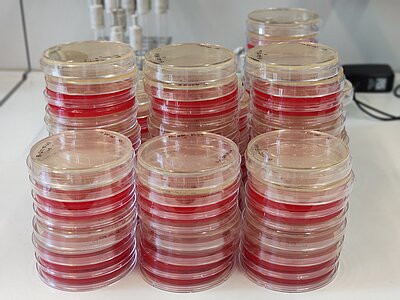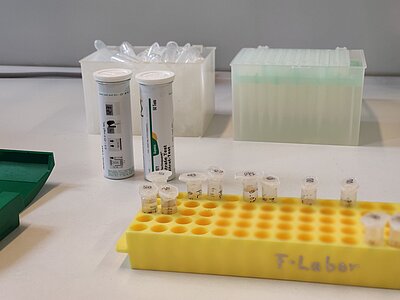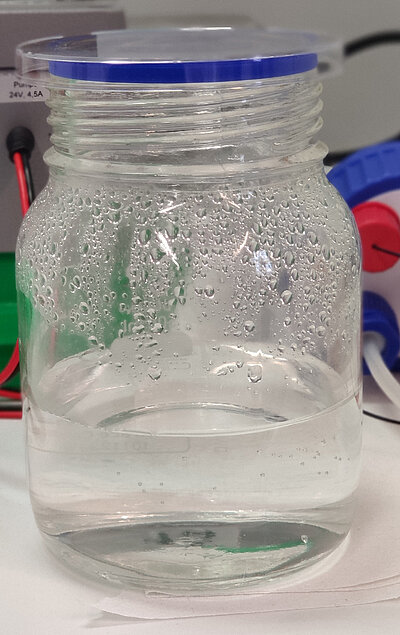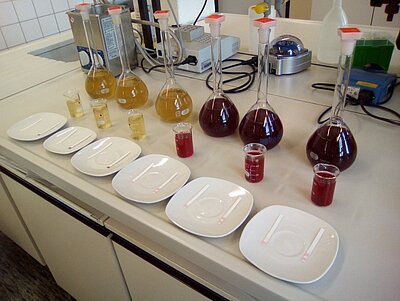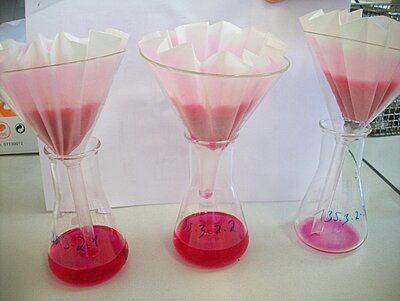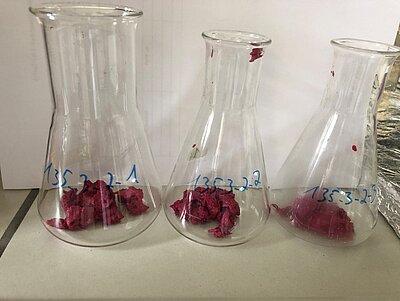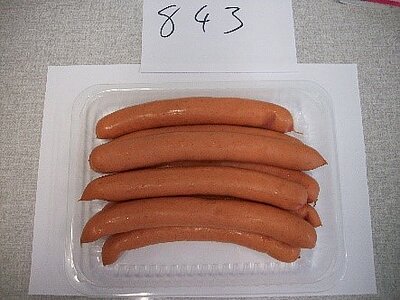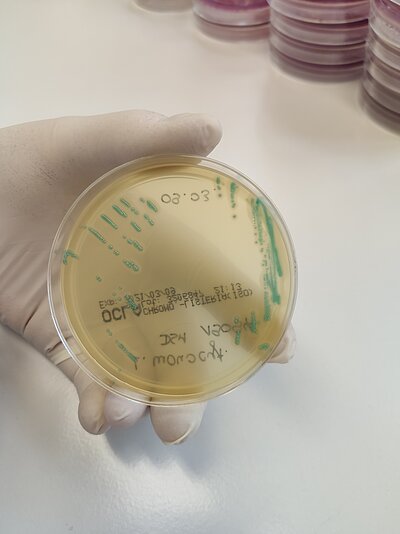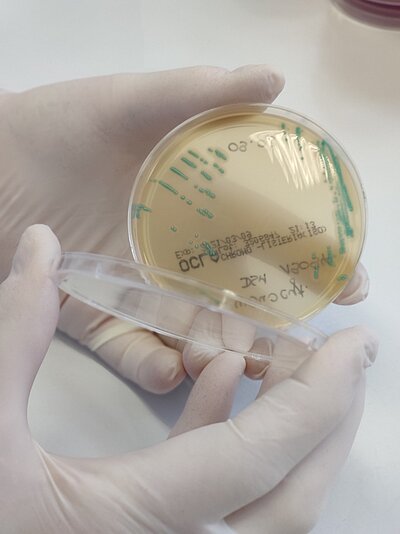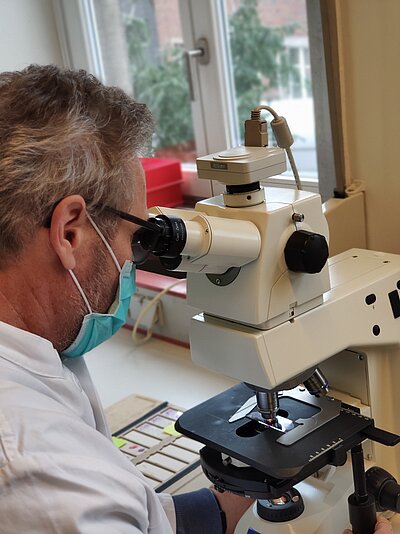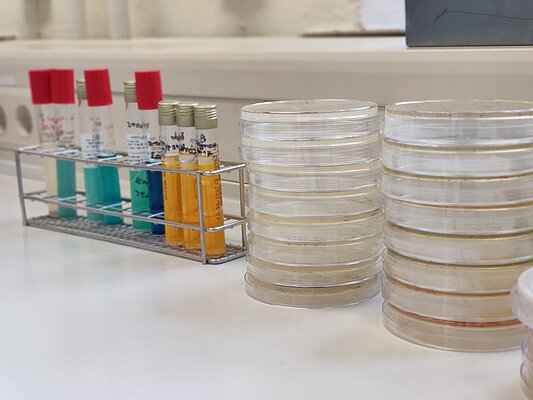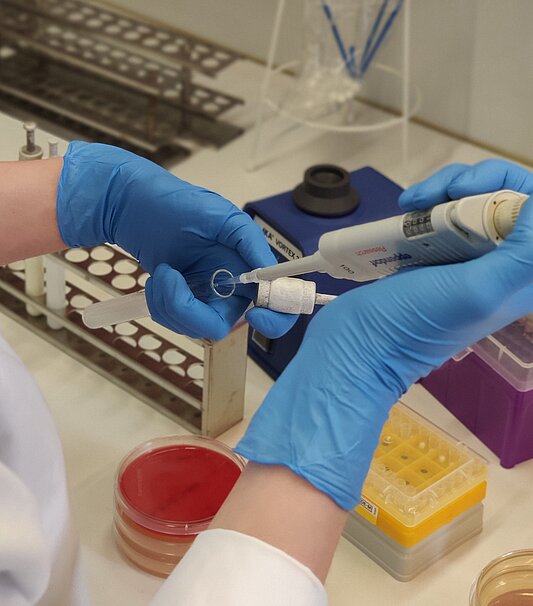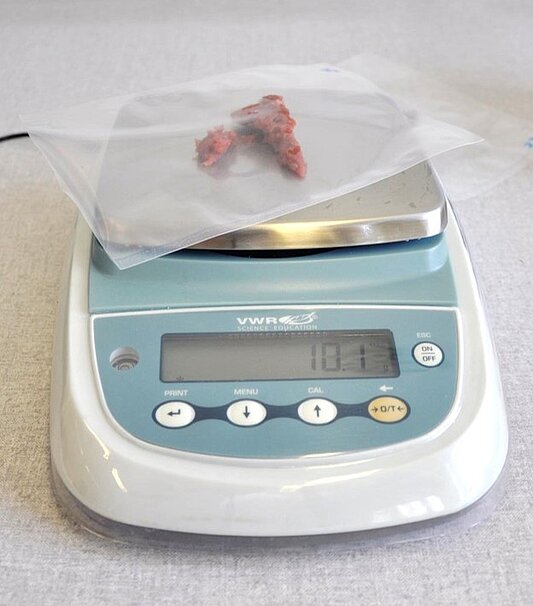COLD PLASMA - A NEW TECHNOLOGY FOR THE FOOD SECTOR
The generation of cold atmospheric plasma is a novel technology in which a reactive mix of electrons, ions, excited atoms and molecules as well as reactive species (e.g. O3, NO, NO2) is created. These components can be used to inactivate food-relevant pathogens. Recently, in addition to the antimicrobial effect, the potential of this technology in the production processes of meat products has also been investigated. The Department of Food Microbiology has 2 prototypes for the generation of plasma-activated air and plasma-activated water. Together with our cooperation partner, terraplasma GmbH (www.terraplasma.com), we are investigating possible applications of cold plasma in the field of animal foods.
Contakt: Dr. Sylvia Mitrenga, TÄ Johanna Vahle
Publications:
Lis, K.A., et al., Inactivation of Salmonella Typhimurium and Listeria monocytogenes on ham with nonthermal atmospheric pressure plasma. PLoS One, 2018. 13(5): p. e0197773
Lis, K.A., et al., Inactivation of multidrug-resistant pathogens and Yersinia enterocolitica with cold atmospheric-pressure plasma on stainless-steel surfaces. Int J Antimicrob Agents, 2018. 52(6): p. 811-818.
ALTERNATIVE CURING PROCESSES - USE OF PLANT EXTRACTS
In the production of meat products, natural plant extracts can be used to generate novel products. The so-called reddening can thus take place without the addition of nitrite curing salt. For this purpose, nitrates naturally contained in the extract are converted to nitrite via a starter culture. This form of curing is also known as "naturally-cured". There is a controversial discussion as to whether and to what extent such products can offer advantages over conventionally produced curing products. Our research approach is to produce products using alternative curing processes and to examine them for microbiological safety, shelf life and consumer acceptance.
Contact: Dr. Sylvia Mitrenga, TÄ Johanna Vahle
Publications:
Riel, G., et al., Effects of parsley extract powder as an alternative for the direct addition of sodium nitrite in the production of mortadella-type sausages – Impact on microbiological, physicochemical and sensory aspects. Meat Science, 2017. 131: p. 166-175.
LISTERIA MONOCYTOGENES - A BACTERIUM IN FOCUS
The zoonotic pathogen Listeria monocytogenes is often in the focus of the media and thus also in the focus of research, not least due to "food scandals". In cooperation with the Institute of Animal Nutrition, our group deals with questions relating to the entry of Listeria into the food chain. In addition, germs isolated from food samples are characterized and evaluated in more detail and possible control strategies are developed.
Contact: Dr. Sylvia Mitrenga, TÄ Johanna Vahle
MILD HEATING PROCESSES - INFLUENCE ON RELEVANT ZOONOTIC PATHOGENS
Comparatively low heating temperatures (often well below 60 °C) are used both in the meat sector ("sous-vide", low temperature long time (LTLT) treatment) and in the milk sector ("thermization"). The temperatures are usually chosen to offer the consumer a particularly positive, sensory experience. However, the microbiological safety is questioned due to the low core temperature. Especially in the low temperature ranges, differences due to the surrounding food matrix as well as species- or strain-specific differences of different microorganisms come into play much more clearly than in the high temperature ranges. The focus of our research is therefore to determine the efficiency of killing food-relevant pathogens under these special conditions. The results are intended to provide clues for consumers and consumer advocates in order to be able to better assess such manufacturing processes or resulting products.
Contact: Dr. Sylvia Mitrenga, TÄ Johanna Vahle
Publications:
Abel, T., et al., Inactivation of Listeria monocytogenes in game meat applying sous vide cooking conditions. Meat Science, 2020. 167: p. 108164.
Becker, A., et al., Low temperature cooking of pork meat - Physicochemical and sensory aspects. Meat Sci, 2016. 118: p. 82-8.
Becker, A., et al., Low temperature, long time treatment of porcine M. longissimus thoracis et lumborum in a combi steamer under commercial conditions. Meat Sci, 2015. 110: p. 230-5.

